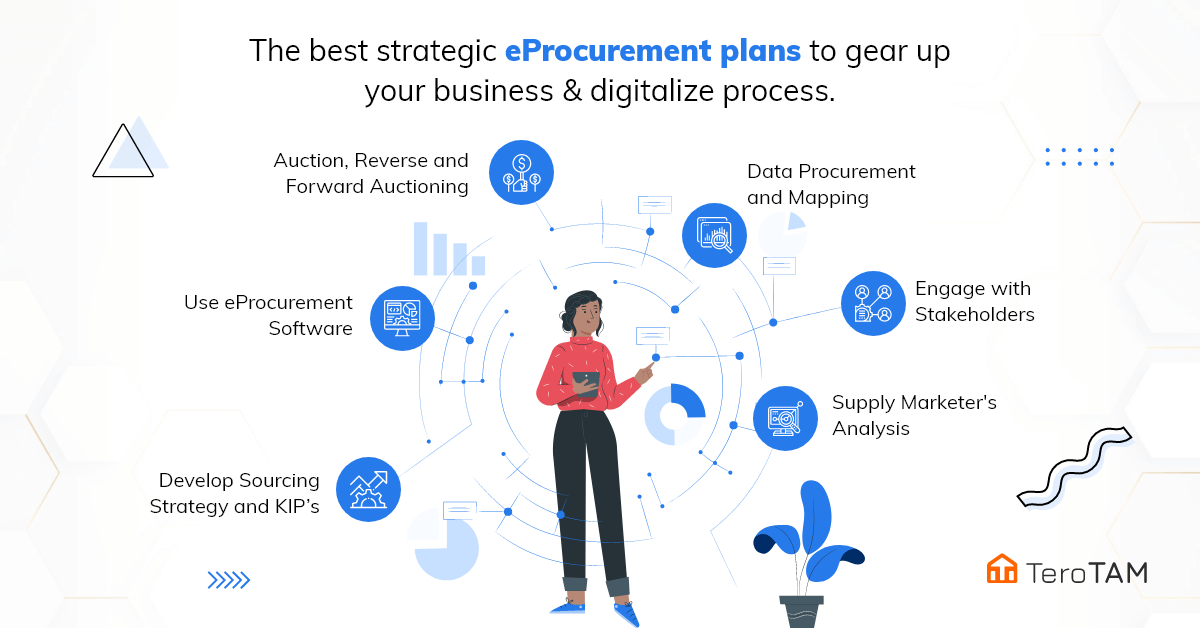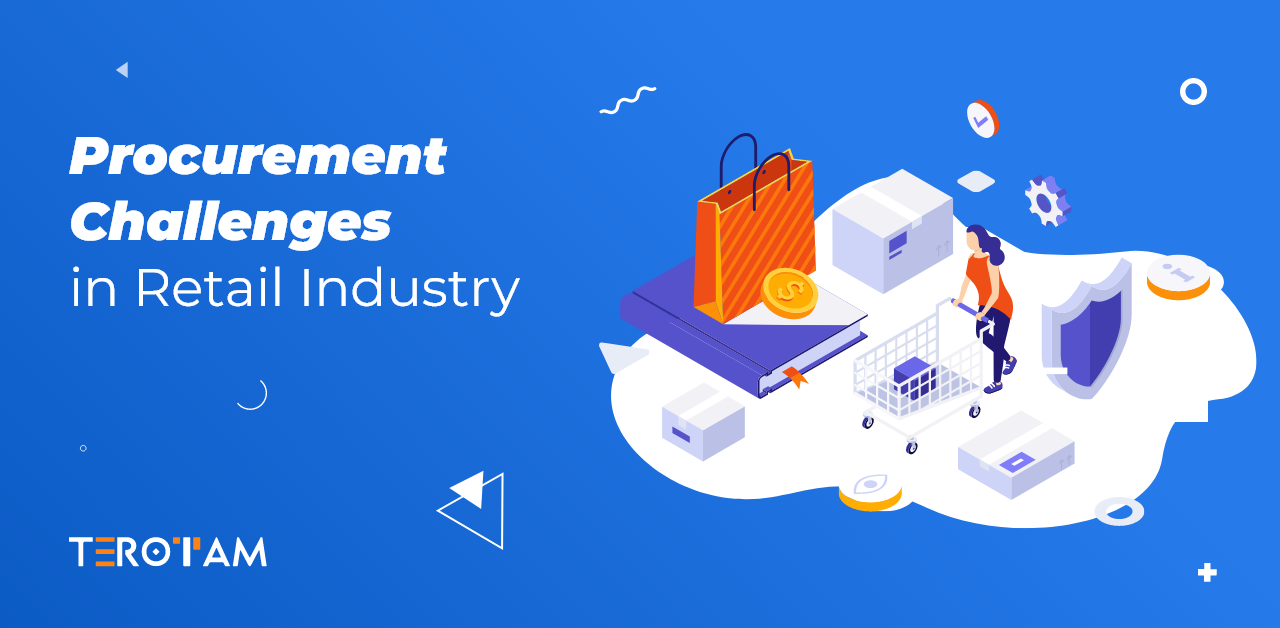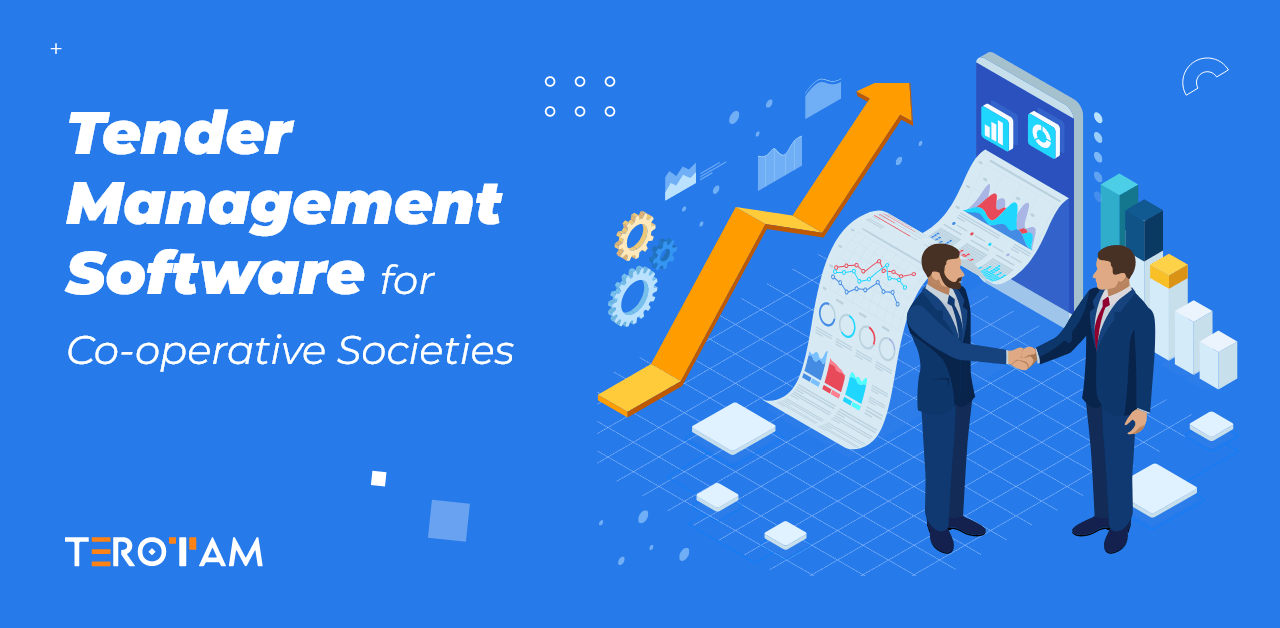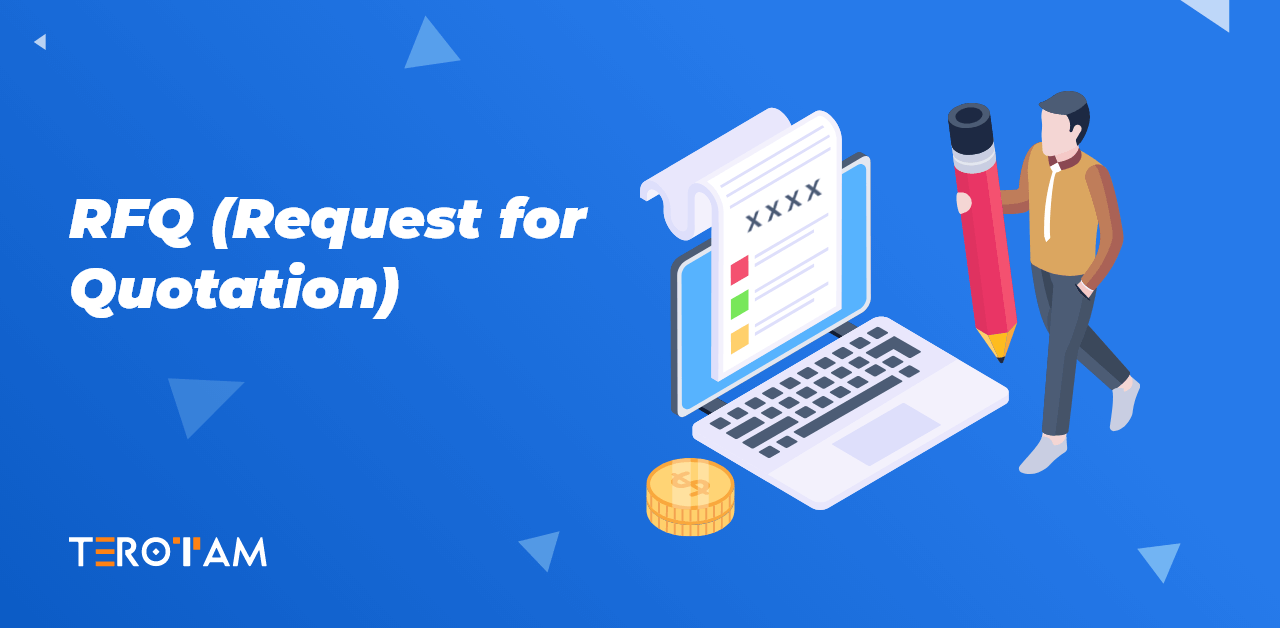eProcurement is a software known as electronic procurement for superior quality exchange of supplier service, purchase requests, goods, and tendering through the ensured facilities of a web-enabled operations system. This is the centralized cloud application to digitize and automate the business interactions between organizations and customers.
Considering this solution improves a business’s value and speeds up the process and efficiency. eProcurement makes hands free to initiate and evaluate the vendor service, tractions, purchase requests, accounts, and ongoing business process through live analytics and system dashboards.
6 Steps to Implement an eProcurement Plan
1. Data Procurement and Mapping
It is crucial part to collect the business’s comprehensive requirements to get a precise analysis and understand the project. This master data allows us to make the right decision to allocate the budget and select the number of vendors and service length.
Data procurement and collections consist of:
Product and Service Details
The data collection of required goods and service nomenclature strategizes the necessity of organization needs and, based on that, prioritizes the requirements, which is to record the procurements with the unique identity and number to process, verify, and make the approval.
Digital Workflow and Hierarchy
For the digital workflow and approval process, eProcurement can be defined at each level for creating purchase orders, requests, transactions, and approval from departments to make the process smooth.
Data Integration
Data integration in eProcurement makes it easier to collect data from various departments like transactions, purchase history, service provider details, staff, and approval all can be centralized into a web server, which enables quick access to data at any time and validates data to take action.
2. Engage with Stakeholders
After collecting the data procurements for your proposal, the initial plan will be executed. The next step is integrating with stakeholders to get service from them with the listed requirements inputs. Engaging with customers has a chance to improve procurement plans and helps organizations to achieve business goals. It will be helpful to maintain clear dealing and enhance the bonding with the best support and service.
Spending time with the customer face-to-face improves communication with the supplies and services. This kind of bios-free communication through eProcurement identifies more opportunities, adds value to the business, and creates effective collaboration.
3. Supply Marketer’s Analysis
Your supply marketers must be able to provide the suitable supply with expected quality standards, consistency, and accuracy. Based on the supply marketer’s analysis, get a clear vision of budget and cost analysis and consider the time of delivery materials and more.
Once the marketer’s analysis has been reviewed, identified, and evaluated thoroughly. The procurement process will move to Further. That is
- Price estimation for service
- Product delivery timeline
- Compliance and agreements
- Service length and size
Reviewing the above points will help the organization identify the opportunities and obtain rapid growth quickly. This eliminates unnecessary time and allows for the best cooperation with vendors from the existing supply chain.
4. Develop Sourcing Strategy and KPIs
Based on the gathered business procurements, three process steps can first develop the implementation plan by considering in/outsourcing strategy. The following are the best examples of sourcing strategies:
Purchase Request
Sending purchase requests with comprehensive product or goods details helps maintain a clear understanding and requirements.
Strategic Partnership
The right partnership strategy determines the competitiveness of the supplier’s marketplace and reduces the risk levels in service acceptance.
Following the above strategy makes it easy to plan the eProcurement requirements and prepare clear insight & KPIs. This will create a plan set iterations to develop and execute the plan flawlessly, and this generated KIPs (Key Performance Indicators) decide to focus on business milestones, better procurement, and cost reduction.
5. Use eProcurement Software
It is executing and using eProcurement software to manage all the business procurement requirements through the web-based model. So it is the best tool for your business to finish the job and consolidate your procurement operations all in one place. This means external customers/vendors or stakeholders can walk through the same directory and collaborate to work together: Using this part of the traditional method, step down the time-consumption and conflicts.
The reasons you should use eProcurement software
- Online purchase requests and orders
- Integrate with system data
- Statement of account payable, invoices
- ARC, RFQ, and price negotiation
- Dynamic workflow and approval
- Provide clear insights and dashboards
- Manage staff and vendors
- Document management system
- Data security and more.
Using cloud-based eProcurement software tracks each department’s live progress and status and allows them to take actions accordingly.
6. Auction, Reverse, and Forward Auctioning
eProcurement digital software provides online auction features to users with a cloud platform to organize, manage, and conduct live auctions. Using it, conduct live auctions either as a centralized medium for business practices or a fundraising event remotely. It includes time, inventory, and sale management tools during live auctions. They also produce reports to display profits, inventory, sales figures, and other metrics.
Reverse Auction
The reverse auction is a plan that can bring value to the organization along with a well-defined eProcurement 6 steps strategy. This online-based reverse auction process is implemented with careful objects and planning to obtain expected price compression.
Following this cloud reverse auction is a SaaS solution. Easy to use anywhere online sourcing software and allows users for quick setup of online auctions with minimal supplier (bidder) training. Also provides a reverse auction service whereby an expert team of consultants conducts the reverse auction for your organization.
Forward Auction
Forward auctions are essentially eProcurement auctions in which the bidding process starts with the lowest possible price, and the price of bid value increases gradually with certain demand. This type of auction can be done through several different forms of eProcurement, ranging from auctions that involve setting a minimum price and then bids that are above that minimum or starting with a high price.
Rundown Lines
The world choosing TeroTAM eProcurement is a more productive and effective solution for any scale business and organization. It can reduce procurement costs and time by approaching through structure plan implementation. Moreover, using this cloud tool helps organizations to get clear visibility of spending investment of outsourcing/vendor services and streamline operations to cross milestones.
We are looking forward to hearing from you to improve spending control. To know more about our eProcurement software and how benefit your organization contact, reach us at contact@terotam.com








